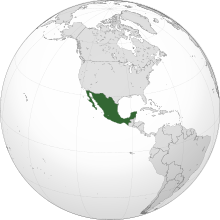
The Trans-boundary, Land, and Atmosphere Long-term Observational and Collaborative Network (TLALOCNet) is a network of continuous Global Positioning System (GPS) and meteorology stations in Mexico to study atmospheric and solid earth processes. This completed network spans most of Mexico with a strong coverage emphasis on southern and western Mexico. The network created a collection of continuous GPS meteorology or cGPS/Met sites based on the EarthScope Plate Boundary Observatory standards for the study of atmospheric and geological processes. [1]
Contents
The network's name is play with the name of an Aztec deity, Tlaloc, the god of rain. Discharge rain, hail and lightning over the earth were associated with this character in ancient Mexico. As the network has pointed in a presentation concerning the capabilities of scientific measurements and forecasts for rain, hail, and hail: [2]
Now, these elements are expected to be observed through the GPS network that is part of the "Long-Term Terrestrial and Atmospheric Transboundary Observatory and Collaboration Network".